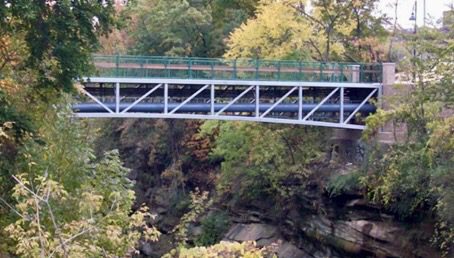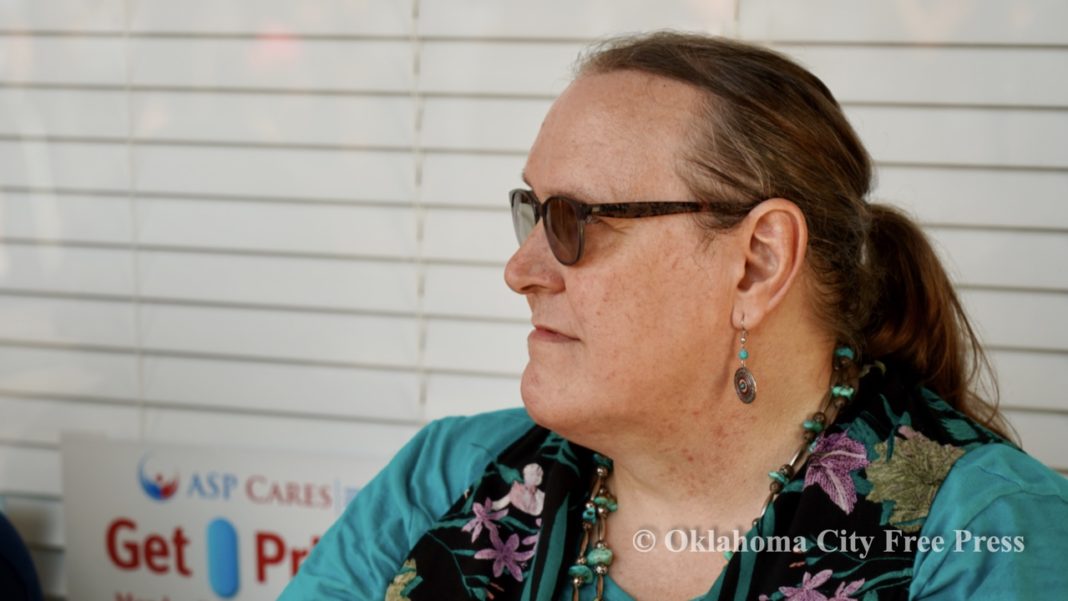Last Updated on January 5, 2024, 12:54 AM | Published: March 4, 2022
Paula Sophia Schonauer, LCSW, continues a serial memoir. If you haven’t read the earlier parts of this series, follow the links at the bottom of this page.
“[Horror fiction] shows us that the control we believe we have is purely illusory,
and that every moment we teeter on chaos and oblivion.”
― Clive Barker
I had wanted to make it to the other side of the river, to climb back to the top of the bridge, but the opposite cliff appeared wet and steep, rocks covered in moss. Perhaps an experienced mountaineer could negotiate the climb, but I had neither the experience nor the equipment to do it safely. I considered continuing to the other side, touching the cliff, wanting to claim bragging rights for crossing the entire span below-deck, but traversing the tenuous apparatus a second time seemed daunting. Plus, without witnesses, my boast would seem hollow, provoking dares to do it again to prove myself.
Doing this again was out of the question. I realized my hubris had pushed me beyond my limits. Having looked down and contemplating a fall, I became aware of my precarious situation, clinging to the tie-rods and turnbuckles with all my strength, white-knuckled fingers aching from strain, knees feeling weak and trembling. I could hardly breathe, afraid that any movement would send vibrations through the cable I stood upon, causing it to sway, leaving me hanging in place until I lost strength and let go.

I do not know how long I stood there, suspended over the river, but it felt like I had fallen into a time warp, each moment elongated by the presence of terror until becoming stagnant, all my senses suspended: vision ablur, muscles numb, hearing nothing but a dull roar, maybe the rapids of the river. I tasted a dry, metallic lump in my mouth, swallowed, only to feel it spread through my torso, deposit in my stomach, creating an ache, a burp of revulsion, and the sensation I needed to defecate.
Then, I kind of laughed, more like a rueful moan, amused that my last action on earth would be shitting my pants, the most inglorious thing I could imagine. My fourth-grade humiliation came to mind, and I felt a surge of anger, remembering Miss Miller’s contrite face, her apathetic gaze.
“Screw you!” I screamed at the memory of Miss Miller, the world in general, and God for leading me here, leaving me here, suspended, clinging for safety.
That anger was enough to snap me out of my terror, fueling a resolve to live, and I began to take small side-steps back to where I had begun. By the time I reached the edge of the cliff, from which the below-deck apparatus had been attached, I was exhausted, muscles aching from strain, breathless, tears streaming down my face. I collapsed in quaking sobs, falling face in moss, the smell of sewage and decay enveloping my nostrils. It felt like I might die there, heart seized from overexertion, but after a frenzy of sorrow, I felt spent and numb, ready to climb away from the abyss.

Later that month, a news story reported that a teenage boy had jumped from the observation bridge, but by the time authorities had been able to get to the bottom of the Cuyahoga River gorge, the body had been swept away. It had rained a lot the day before, so the river was high, the water deeper. The media reported that the body would surface when the river was back to normal.
Over the next week, I rode my bicycle up and down Glens Trail, which ran adjacent to the river gorge. Periodically, I stopped to climb near the cliff edges to gaze down at the rapids, hoping to spot the body languishing on some rocks. The fate of this boy had become an obsession because the same thing almost happened to me. I wondered if he had jumped or fallen, perhaps, like me, venturing too far but unable to get back. It occurred to me, had I fallen, people would have thought I completed suicide, relegating me to hell.
One afternoon, I heard one of the neighbor kids talking about the boy. His name was Lee, a rotund boy with short, blond hair, and sun freckles. “They found him down by the dam.”
“Which one,” I asked.
“The big one by that big cave.”
He had referred to Mary Campbell Cave, a large half-dome of sandstone and shale that, according to legend, had once housed a tribe of Delaware people. The Delaware had kidnapped Mary Campbell, returning her to her family in 1763 before they had been pushed further west by the increasing number of white settlers in the Ohio Valley.
The hydroelectric dam had been constructed in 1913 and had once provided power to the City of Akron, but with the increasing use of coal to generate electricity, the dam had been converted to provide cooling water for a power plant, often surrounded by mountains of coal, a short distance down river.
According to Lee, the boy had been wedged in a tangle of branches near the top of the dam. He provided a gruesome description of the boy.
“He was all green, covered in that slimy seaweed stuff, and there were mushrooms growing on his body.”
I imagined mushrooms all over the kid’s face, sprouting like acne over mossy, green skin, vacant sockets for eyes, and a wide, lopsided grin from the jaw falling loose on one side. He was unrecognizable as human, becoming something else, his identity lost forever.
I did not want to believe it. “That’s a bunch of crap.”
“It’s true. I swear. My dad told me.”
I rode my bicycle to the Sparkle Mart a block away from home. They still had some newspapers in the dispenser machines. I paid a quarter, grabbed a copy, and flipped through the pages until I saw the story about the kid’s recovered body. There was a brief description of the body, almost exactly like Lee’s description except for the mushrooms. Even so, the grotesque image I had imagined persisted, invading my dreams, accusing me, a croaking voice emanating through the crooked grin, “It should have been you.”
Previous episodes
- Manhood, from the inside out — Memoir and Mythology
- Part 2 — Cubby Hole
- Part 3 — Magic Carpet Cocoons
- Part 4 — Snips and Snails and Puppy-Dogs’ Tails
- Part 5 — Mirror
- Part 6 – Deep Water
- Part 7 – Limbo
- Part 8 – Dissociation
- Part 9 – Shame
- Part 10 – Judgement Day
- Part 11 – Inferno
- Part 12 – Haunted
- Part 13 – Did I say that?
- Part 14 – The end times
- Part 15 – Alone again (naturally)
- Part 16 – Welcome to Grey Town
- Part 17 — Stigma
- Part 18 — Turning the other cheek
- Part 19 — Malingering
- Part 20 — Rorschach
- Part 21 – Soft hands
- Part 22 — How real men talk
- Part 23 — Crash landing
- Part 24 — To make a fist
- Part 25 — To hurt another
- Part 26 — Showdown
- Part 27 — Savage aggression
- Part 28 – Heroic
- Part 29 — Fear of death
- Part 30 — To be an android
- Part 31 — Too old for toys
- Part 32 — Her eyes
- Part 33 — A bedtime story
- Part 34 –- Sacrifices
- Part 35 — don we now our gay apparel
- Part 36 — Aspirations
- Part 37 — Doing the math
- Part 38 — Baseball rebels
- Part 39 — Climbing Mount Maslow
- Part 40 — Dear mom
- Part 41 – O Holy Night
- Part 42 — Chrysalis
- Part 43 — The Pain of Loneliness
- Part 44 — A Picture and 900 Words
- Part 45 — A night visitor
- Part 46 — Unnatural
Guest Columnist Paula Sophia is a licensed clinical social worker in Oklahoma City and a former Oklahoma City Police Officer.







